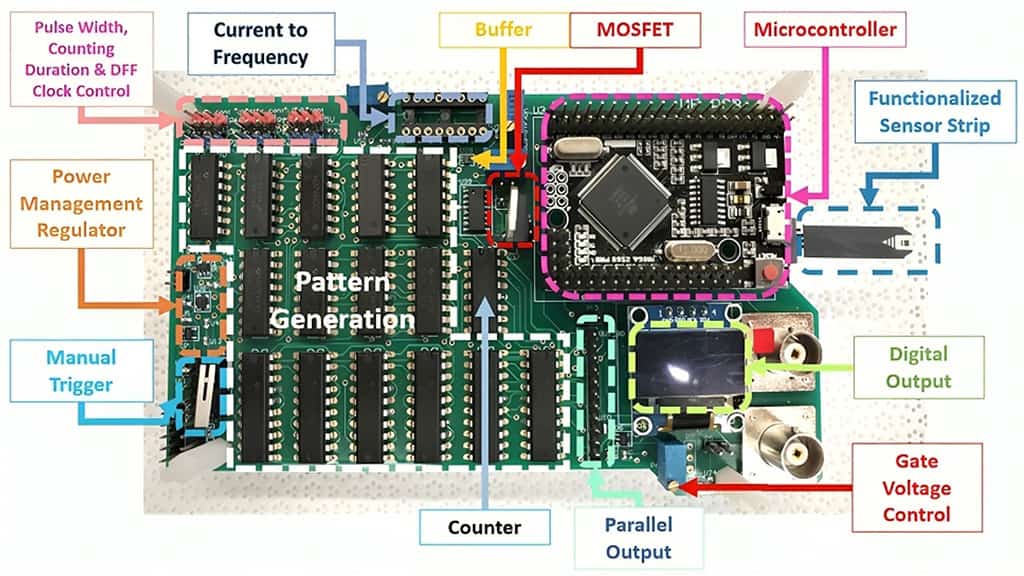
While the world was busy fighting COVID-19 in 2020, 685,000 lives were lost to breast cancer. In the US alone, over 40,000 women succumb to breast cancer every year, making it one of the deadliest cancer types. Although timely detection of breast cancer can save the lives of many such patients, not everybody can afford the cost of breast cancer diagnosis, and this isn’t just the case in the US.
According to researchers, in numerous developing nations, diagnosing breast cancer requires exorbitant expenses, including procedures such as biopsies, MRI, and mammography. Coupled with the scarcity of healthcare facilities, this makes early detection all the more difficult.
However, a newly proposed $5 innovation could solve this big problem.
Researchers from the University of Florida and Taiwan-based Yang Ming Chiao Tung University recently published a study, revealing a portable biosensor capable of detecting breast cancer in a person within five seconds, just by analyzing their saliva.
“Our method for breast cancer screening stands out because it is affordable, quick, requires only a small amount of saliva, and is highly accurate,” Hsiao-Hsuan Wan, first author of the study and a Ph.D. Candidate at the University of Florida, told ZME Science.
Saliva-based biosensor versus traditional diagnostic equipment
Currently, breast cancer is diagnosed using a mammogram, a machine that captures X-ray images of breasts. If something suspicious is detected in the X-ray, then the doctors perform an ultrasound or MRI, producing detailed images of the structures inside the patient’s breast.
These traditional diagnostic methods take some time to produce results and involve bulky and expensive equipment, making the screening process slow and costly.
In the US, forget treatment, breast cancer screening alone could cost you hundreds to thousands of dollars, and your health insurance may not cover it — diagnosis is not considered treatment but a preventive measure.
However, at least the hospitals in the US have screening machines. “In areas lacking access to advanced technologies like MRI, women encounter formidable obstacles due to financial constraints and geographical distances when seeking medical care,” Wan said.
This is where the proposed biosensor can make a huge difference. The portable device includes strips, akin to those used in glucose testing, and a handheld-sized printed circuit board (PCB).
A user doesn’t even need to visit a hospital for the screening. All you need to do is place a saliva sample on the strip and in five seconds, the device will reveal whether your body has biomarkers (proteins in this case) associated with breast cancer.
“Its user-friendly design enables easy at-home use for monitoring health, facilitating early detection. This approach also proves cost-effective, with the strip priced at just a few cents and the reusable PCB at $5, making it accessible in resource-limited regions,” Wan told ZME Science.
However, in contrast to mammography and MRI, the biosensor cannot provide direct visualization of the tumor’s size and location. But the researchers claim that they can still estimate the severity of cancer cases with reasonable accuracy using the device.
Connecting the dots between saliva and breast cancer
According to the researchers, human saliva contains numerous biomarkers linked to breast cancer, including HER2 and CA 15-3 (proteins made by breast cancer cells). Their expression levels in the saliva correlate with the severity of the condition.

The biosensor strips are loaded with antibodies specific to the targeted proteins. When a saliva sample is introduced into the microchannel on the strip, the antibodies come in contact with the biomarkers.
Synchronized voltage pulses are applied on the electrodes on the strip and PCB to see whether antibodies have combined with the biomarkers.
“The charges on these electrodes fluctuate in response to the targeted protein concentration within the sample solution. The resulting signal from the strip is amplified and then converted into digital readings, facilitating easy interpretation of the results for users,” Wan said.
The study authors suggest that the technique is not just limited to detecting breast cancer. In their past research, they effectively utilized this technique to detect troponin, Zika virus, and cerebrospinal fluid.
Moreover, they are also working on a way to detect COVID-19 using saliva samples.
Is the biosensor available and ready for use?
Wan and his team aim to bring this technique to the market as soon as possible and are seeking companies to assist with manufacturing. They have also submitted a proposal to the National Institutes of Health (NIH) with hope of securing funding to advance their research.
They believe that in about five years their biosensor will be commercially available. However, you may not be able to buy it for $5 — at least in the beginning.
“The $5 covers only the expenses for the PCB and strips. However, for market readiness, the reusable PCB could potentially cost around a hundred dollars, considering additional manufacturing expenses like salaries and advertising. With mass production, the price could be significantly reduced,” Wan told ZME Science.
Even for 100 bucks, this portable device is still likely to stay less expensive and easier to employ than traditional diagnostic methods.
Hopefully, whenever it comes on the market, it will make breast cancer screening more accessible and affordable than ever.
The study is published in the Journal of Vacuum Science & Technology B.






